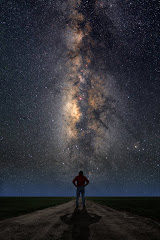While training for my trek across Spain along the Camino de Santiago, I have been doing lots of walking and hiking. I know how important it is to keep my electrolytes balanced. Plain water, as good as it is for us, doesn't adequately rehydrate the body. So, I have been spending lots of money on electrolyte products, mostly the ones that come in individual packets that are easy to carry in my pack and add to my water bottle. Most taste horrid, but I know I need them, so I drink them.
Well, one of the bloggers that I read posted this. It not only reminds us how dangerous and deadly it can be if we don't take rehydration seriously. It gives some helpful tips on how to prevent problems. Visit Timecheck's blog and read this informative post.
After reading it, I googled "homemade electrolyte drink" and found thousands of links to recipes.
So, I went out and got all the ingredients and mixed up a batch. Surprisingly it tastes so much better than the electrolyte packets I have been buying. And, it's much cheaper.

Here's the recipe:
1 quart water
Tang, use measurement on container for 1 quart
1/2 tsp sea salt (sea salt has minerals not found in table salt)
1/4 tsp. Litesalt (which is potassium based)
1/2 tsp. baking soda
*optional juice of 1 lemon, for flavor(lemon has natural electrolytes)
Mix all ingredients well and put in your sports bottle. Drink throughout your hike or workout.
DO NOT give this drink to children under 12 yrs old. But, if you google "homemade Pedialyte drink", you will find a very similar rehydrating drink for children.
And those on any type of medication should consult their doctor before trying this drink.

Most of the recipes I found on the net called for 4 tablespoons of sugar(in the above recipe), but Timecheck had told me he used Tang in place of the sugar. Tang adds a nice orange flavor and from what I understand it is the only drink the astronauts use on their space trips. So, I guess if it is good enough for the astronauts, it's good enough for me.
Happy Trails
Rita



 The delightful spirit in the tree bewitched us and brought out a playful nature to our early morning walk. Which lead to several questions for pondering, that I believe to be true.
The delightful spirit in the tree bewitched us and brought out a playful nature to our early morning walk. Which lead to several questions for pondering, that I believe to be true.

 When we walk in a forest and feel calm and relaxed, is that feeling evoked because the trees are eminating vibrations of peace and serenity?
When we walk in a forest and feel calm and relaxed, is that feeling evoked because the trees are eminating vibrations of peace and serenity?




 Training for the Camino de Santiago means long days of walking. So, I consider myself a lucky girl. Not only am I a lover of a good walk; I happen to live less than 10 miles from one of the most beautiful parks in the area.
Training for the Camino de Santiago means long days of walking. So, I consider myself a lucky girl. Not only am I a lover of a good walk; I happen to live less than 10 miles from one of the most beautiful parks in the area.







